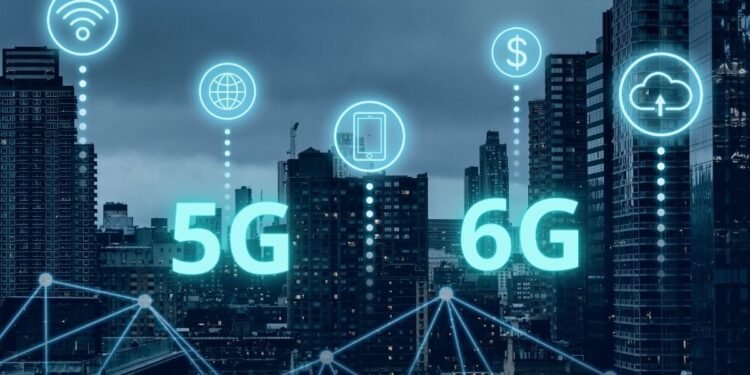The evolution of wireless technology has always been a driving force behind global advancements in communication, industry, and everyday life.
From the early days of 2G, which brought us SMS, to the transformative power of 4G, which enabled mobile internet and streaming services, each generation of wireless technology has significantly impacted how we connect and interact with the world.
Now, as 5G continues its global rollout, bringing faster and more reliable connections, the tech world is already looking ahead to the next frontier: 6G.
The Promise of 5G
5G, the fifth generation of wireless technology, has been heralded as a game-changer for its ability to deliver faster speeds, lower latency, and more reliable connections. It’s not just about quicker downloads or smoother streaming—5G is expected to enable a host of new applications across various industries.
For instance, 5G could facilitate remote surgeries in healthcare, allowing doctors to perform procedures from thousands of miles away with minimal lag. In transportation, it could support the widespread adoption of autonomous vehicles, enabling cars to communicate with each other and with infrastructure in real time, reducing accidents and improving traffic flow.
Moreover, 5G’s ability to handle many connected devices simultaneously makes it a critical enabler of the Internet of Things (IoT). From smart homes to smart cities, 5G is laying the foundation for a future where almost everything is connected, and data flows seamlessly between devices.
The Dawn of 6G
As we fully realize the potential of 5G, the groundwork for 6G is already being laid. While still in the conceptual and research stages, 6G is expected to push the boundaries of wireless technology even further. With promises of speeds up to 100 times faster than 5G and latency reduced to nearly zero, 6G could open the door to possibilities currently the stuff of science fiction.
One of the most talked-about potential applications of 6G is real-time holographic communication. Imagine having a face-to-face conversation with a hologram of someone on the other side of the world, with no noticeable delay. This could revolutionize not just personal communication, but also fields like education, business, and entertainment. Virtual and augmented reality experiences could become more immersive and realistic than ever before, blurring the lines between the physical and digital worlds.
Beyond Connectivity: The Implications of 6G
The implications of 6G go beyond faster internet and better communication. As we move towards a world where everything is connected, 6G could become the backbone of an entirely new technological ecosystem. One key area of development is the integration of AI with 6G networks. AI-driven systems could optimize network performance in real-time, manage resources more efficiently, and enable smarter, more responsive environments.
In addition to AI, 6G could play a pivotal role in advancing autonomous systems. With near-instantaneous communication, autonomous vehicles, drones, and robots could operate with unprecedented precision and coordination. This could have far-reaching effects on industries like logistics, agriculture, and manufacturing, where automation is already beginning to take hold.
Another exciting aspect of 6G is its potential to enable more advanced forms of human-machine interaction. Brain-computer interfaces (BCIs), which allow direct communication between the brain and external devices, could become more viable with the ultra-low latency and high bandwidth of 6G. This could lead to breakthroughs in areas like healthcare, where BCIs could help restore mobility to individuals with paralysis or other neurological conditions.
Challenges and Considerations
While the potential of 6G is immense, it’s important to acknowledge the challenges ahead. The development and deployment of 6G will require significant investment in infrastructure, research, and development. Moreover, the shift to 6G will likely raise new concerns about data privacy, security, and the digital divide, as not everyone may have equal access to these advanced technologies.
Furthermore, the environmental impact of deploying and operating such advanced networks will need careful consideration. As with 5G, there will be a need to balance technological advancement with sustainability, ensuring that the benefits of 6G do not come at the cost of the planet’s health.
The journey from 5G to 6G represents the next leap in connectivity, promising to reshape our digital world in ways we are only beginning to imagine. While 5G is still in its early stages, the research and development of 6G are already paving the way for a future where the boundaries between the physical and digital realms are increasingly blurred.
From real-time holographic communication to AI-driven networks, the potential applications of 6G are vast and varied, offering a glimpse into a world where technology is seamlessly integrated into every aspect of our lives.













